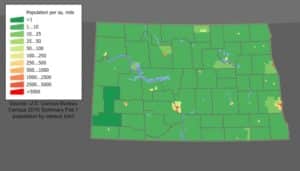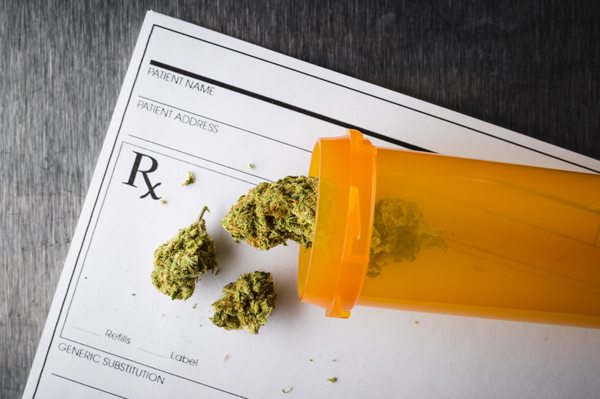Medical marijuana has been officially legalized in North Dakota since the passage of Measure 5 (also called the North Dakota Compassion Care Act) last November. However, now the implementation and regulation is being debated and has been since early this year.
After the election results, an 81-page bill called the North Dakota Compassion Care Act in the ND senate has been a hot topic of debate. If approved, the bill aimed to legalize medical marijuana use and shape the laws surrounding its consumption in the state. The good news is that the ND state senate did vote to approve the legalization of medical marijuana late last month. The bad news is that it did so at the cost of removing the right for patients to grow plants in their homes for personal use.

Why the limitations?
The reason the state senate voted not to allow a provision for home plant growth in their medical marijuana laws was said to be because of increased costs of enforcement, mainly. Opponents say that by not allowing plants to be grown in the home, the number of eligible medical marijuana users was cut in half, thereby necessitating fewer resources spent on regulations and enforcement.
Also up for debate was a provision allowing medical marijuana users to ingest their medicine by smoking it, rather than through other methods like cannabis infused oils or cannabinoid pills. A compromise was reached that will allow medical marijuana patients to smoke their medicine if they so choose, provided that they have their doctor’s sign off that no other form of ingestion will work as well for their particular case. It seems like a small thing to get up in arms about- what difference does it make to North Dakotans how their neighbors ingest their medicine? But on the whole, it’s a compromise we’ll be able to live with.
A Worthy Compromise?
The compromise that got the bill passed, however- the one forbidding patients from growing medicine for their own use, is a much bigger compromise. The likelihood is that the medical marijuana legalization bill would not have passed without this compromise being instated, but will it prove to be worthwhile in the long run?
The ability to grow one’s own medicine is undoubtedly a boon for medical marijuana patients. It is more economical than buying it, provides instant easy access, and is much more viable for patients with difficulty getting around. When you have a disease like Muscular Dystrophy, for example, it’s a much easier task to get yourself to the back garden for a dose of medicine than getting yourself downtown to the nearest dispensary- especially in a state so sparsely populated as North Dakota. Being able to grow your own medicine allows many medical marijuana patients to become self-sufficient in providing for their own needs, whereas those same patients may need to hire helpers to go to the dispensary for them since they’re not allowed to grow their own medicine. These restrictions add a layer of inconvenience to the lives of sick patients that are already having a tough enough time as it is. Because of this, most states with home growth restrictions limit them to people living within so many miles of a dispensary. This is not the case in North Dakota, though it seems to be one of the states whose residents would most benefit from such a law, since its population is so spread out:

On the other hand, though, the bill being passed will ultimately allow hundreds of patients access to potentially life-saving medicine. It’s estimated that 5 out of every 1,000 North Dakota residents will take advantage of the newly legalized medical marijuana. Because of this, I can’t say that the compromise wasn’t worth it. If a single life is saved because of this new legislation, then it was definitely worth it. I only hope that more funding can be secured in the future, and once North Dakota legislators see how useful and non-threatening medical marijuana is, they will be more open to allowing home growing.
After all, the reason that prohibiting people from growing medical marijuana plants in their homes is expected to reduce medical marijuana patients by half is because it limits people’s access to the medicine. Legislation is not going to control how many people have conditions that can be treated by medical marijuana. It only affects how many people with those conditions have the ability to access the medicine that could help them manage those conditions. In that light, it’s very sad that North Dakotan legislators saw that decrease and interpreted it as a good way to save money. After all, these are real people’s lives at stake. Hopefully in the future, they will be more compassionate and allow all North Dakota residents access to the medicine that they need in a way that works for them.
A Hopeful Future
If the problem is strictly budgetary, chances are good that the laws will eventually be amended to allow for home growth. Although the program is not expected to turn a profit in its first year, in subsequent years it should be fully funded by licensure and registration fees from dispensaries, growers, and patients. One million dollars were allocated to oversee the program during its first two years, and projections show that the program will likely raise at least 1.3 million dollars during the first budget cycle. This startup money will fund the 12 to 15 new state government positions that will be required to oversee the newly blossoming medical marijuana industry. Luckily, it seems to be a very financially sustainable, and even profitable model.
Lauren Fallon is a cannabis industry writer curiously following legalization measures across the country and the world. You can see more of her work over at cannabis-education.org.







